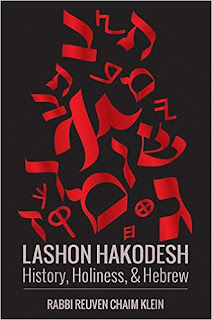Aggadah: Sages, Stories & Secrets
Rabbi Immanuel Bernstein
Mosaica / 266 pages
The Talmudic and Midrashic texts known as Aggadah are
the stories, folklore, historical anecdotes, moral exhortations, and practical
advice, words of inspiration, and most importantly, Jewish wisdom on how to
best live our life in the service of God.
In Aggadah: Sages, Stories, & Secrets, Rabbi Immanuel
Bernstein, a rebbe in a number of yeshivot and seminaries, takes us on journey
through 18 different Haggadic pieces. Some of the topics include free will,
inspiration, gratitude, prayer, torah study, mitzva observance, Shabbat, and
much more. It is also worth mentioning that the Introduction includes a primer (based
on the Rambam[1])
on the role and authority of Aggada, especially with regard to Aggadic pieces
that are sensational, completely unrealistic, or otherwise difficult to digest.
Every chapter begins with an Aggadic reading. Then, after
asking a number of compelling questions on the text, the author weaves
together an adventure of elaborate commentaries and explanations through the
lens of Talmud, mussar, philosophy, halacha, and other texts, leaving us with a
practical and inspirational message. There are also stand-alone excerpts, sprinkled throughout the book, with anecdotes and words of wisdom from contemporary rabbinic
leaders across the orthodox spectrum.
There is a lot to learn in every chapter. The
material is nicely woven together making for a clear concluding message at the
end. Attention rabbis and educators: its chomer l‘drush on a silver platter.
Here’s an excerpt:
Taking long strides can diminish
one five-hundredth of a person’s eyesight. It can be restored to him, however,
at Kiddush on Friday night.
When considering this statement of
the Gemara, we observe that although the bad news is that long strides
diminishes one’s eyesight, the good news is that one can get it back on Friday
night.
The real bad news, however, is that
we don’t actually understand
what any of this means. How do long strides affect one’s eyesight, and how does
making Kiddush restore it?
Part of what Shabbos allows us to
do is to take a step back from the world and regain a sense of the broader
vision of what life is all about, and why we do the things we do. It can often
happen that in the course of our day-to-day activities we get caught up in the
details of life and lose sight of the bigger picture. Whereas our general goals
may be to provide for our families, to contribute to society, etc., these are
not things that we think about every day. The details can often take over, so
that by the time we have reached Wednesday or Thursday, our horizons may have
been reduced to the practicalities at hand. Our goal may now be to simply make
as much money as we can, without remembering why. Perhaps, by Friday, our goal
is simply to make it to the end of Friday.
Earlier, we quoted the Gemara which
says that oversized strides can reduce one five-hundredth of a person’s eyesight. The Maharal[2]
explains that the Gemara elsewhere refers to the world as being “five hundred parsangs by five hundred parsangs.” The
number five hundred thus represents the world. Every person needs to “walk
through the world” in the sense that he needs to be involved in the affairs of
the world. It may happen, however, that over the course of the week, a person
takes oversized strides through the world. This refers to a person
over-investing in ascribing outsized significance to matters of this world,
seeing them as an end unto themselves, instead of a means toward successful
Torah living. Such a person has lost “one out of five hundred” of his vision,
i.e., he has lost a measure of clarity regarding his view of the world.
Can a person ever retrieve this
vision? The answer, says the Gemara, is yes, at Kiddush on Friday night.
By embracing the sanctity of the Shabbos, and by hearing its message reminding
him of a higher destiny, a person can restore his perspective on the physical
world.
****
****
The excerpt above was among the messages that I found to be
especially meaningful. Other distinct pieces include the discussion on: While
we normally assume Avraham’s final test was the Akeida, Rabbeinu Yonah holds
that it was the burial of Sarah, and a discussion about the “evil eye”. The
mixture of so many different texts makes certain that there is something that
will appeal to everyone in every chapter. A tip for the future: An index referencing the many different excerpts in the book that are
related to various parshiot of the Torah would have been a valuable asset to
the book, rendering it a companion to the Shabbat table.
Bottom line. This is an exceptionally worthwhile book. It is certain to both educate and inspire.
To order the book: http://www.amazon.com/Aggadah-Stories-Secrets-Immanuel-Bernstein/dp/1937887499
[1] The
absence of any reference to Rabbeinu Avraham ben Harambam’s treatise on Aggada is a glaring
omission, though Rabbi Bernstein explained to me that he had considered
including it but felt that it was not completely relevant to the introduction,
or the book. Nevertheless, Rabbeinu Avraham is required
reading for anyone who wants to dive into the world of Aggada .Here it is in
Hebrew: http://www.daat.ac.il/daat/mahshevt/agadot/hagada1-2.htm
[2]
Chiddushei Aggados Shabbos 113b.


